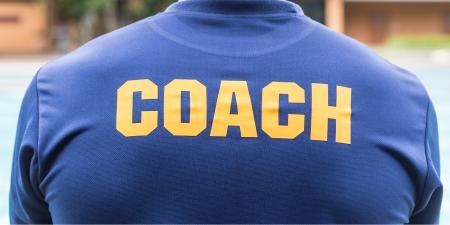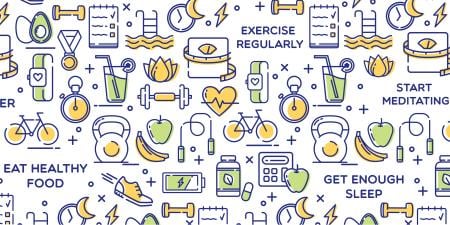In June 2012, the American Medical Association adopted a resolution that called for all physicians to “acquire and apply the 15 clinical competencies of lifestyle medicine, and offer evidence-based lifestyle medicine interventions as the first and primary mode of preventing and, when appropriate, treating chronic disease within clinical medicine” [1]. What is evidence-based lifestyle medicine? What are the 15 lifestyle medicine clinical competencies? And how does every physician acquire these?
Defining Lifestyle Medicine
Lifestyle medicine is the application of simple, natural healing approaches to chronic disease care and prevention. The Lifestyle Medicine Competency Development Panel defines it more fully: “Lifestyle medicine is the evidence-based practice of helping individuals and families adopt and sustain healthy behaviors that affect health and quality of life” [2]. Lifestyle medicine pioneer Dean Ornish has stated that lifestyle medicine has four major components: nutrition, physical activity, stress reduction and rest, and social support systems [2].
Although we are hearing a great deal about the lifestyle medicine concept recently, it is neither new nor alternative. In fact it is not a dramatic shift from what has been known since ancient time. The Hippocratic physicians of the fourth and third centuries BCE believed that food was medicine and vice versa. More recently national organizations such as the American Heart Association and the American Diabetes Association, using consensus panels to create practice guidelines, have consistently recommended that disease treatment should begin with “diet and exercise” changes, before medications are considered.
In 2009 the American College of Preventive Medicine hosted a blue ribbon panel meeting to establish core competencies in lifestyle medicine for primary care physicians (see table 1) [2]. When patient care is approached from this foundation, it looks far different than what is being taught in typical medical school and residency curricula.
| A practicing primary care physician should possess the following knowledge, skills, attributes and values. A. Leadership (2 competencies)
B. Knowledge (2 competencies)
C. Assessment skills (3 competencies)
D. Management skills (4 competencies)
E. Office and community support (4 competencies)
|
Basic Physician Skills
To practice lifestyle medicine, once a physician has a solid knowledge base he or she must develop several basic skills. In performing an effective lifestyle assessment, the physician gains a detailed understanding of the patient’s underlying health habits and risks, not just the series of illnesses, medications, and health system interactions that person has had. Physicians must invest enough time learning about how their patients are eating, exercising, resting, and achieving social support to understand their core lifestyle patterns and therefore the full picture of their health risks. Often extra time and effort invested in understanding events that may predispose or trigger a patient towards poor lifestyle choices can be valuable shortcuts to recognizing when that patient’s health is threatened.
Prescribing lifestyle interventions begins with possessing a clear health behavior-change skill set that includes comfort with tools such as motivational interviewing, positive psychology, and cognitive behavioral therapy. Successful health behavior change requires that patients be ready to take charge of their own health, be driven by their inner strengths and energy rather than external factors, and understand small specific steps they can take to improve. The skill set physicians need to help a patient get in touch with these resources can be, and sometimes is, acquired in medical school and residency. More education is needed, however, to assure that all physicians are familiar and comfortable with these tools.
Once a patient’s risks are assessed and he or she is directed toward health behavior, lifestyle prescriptions should be written with the same level of detail as medication prescriptions [4]. Telling a patient to exercise more or to eat less fat is too vague to be helpful. Giving him or her a specific, customized written prescription for an improved health behavior is much more likely to achieve real lifestyle change (see table 2). Lifestyle prescriptions must take into account each patient’s circumstances and, ideally, should include each element of a SMART objective (i.e., be specific, measurable, attainable, realistic, time-specific).
| Exercise |
|---|
| Frequency: four times each week |
| Intensity: heart rate between 100 and 140 |
| Time: at least 30 minutes each session |
| Type: walking |
| Nutrition |
| Type: cruciferous vegetables such as broccoli, kale and brussels sprouts |
| Amount: 1 serving (1/2 cup cooked, 1 cup fresh) |
| Frequency: once daily |
Intensive Therapeutic Lifestyle Change
The most successful health behavior change programs are those that provide intensive therapeutic lifestyle change (ITLC) [5]. ITLC programs entail intensive, group-based support and can be offered in a community, office, or residential setting. Community-based programs are ideal in many circumstances because they can be located near or within a patient’s normal living environment and can incorporate other people important to a patient’s behavior. They have a strong record of success [6], but even the least expensive can bring economic challenges for some patients. The most successful community-based ITLC is the Comprehensive Health Improvement Program (CHIP), which has graduated more than 50,000 participants [7].
Offering evidence-based ITLCs in the physician office setting is a developing opportunity that promises significant value to patients, physicians. and health insurance companies. Successful office-based ITLCs rely on a physician’s ability to understand and facilitate group visits [8]. Training in group dynamics and an understanding of group-visit billing procedures are core competencies required for running successful office-based ITLC programs. It’s also essential to recognize that group visits represent a culture change for both the health care system and the patient that can be challenging.
In certain circumstances, patients who must make significant health behavior change do best in residential ITLC programs run by experienced lifestyle medicine specialists [9, 10]. Although there is currently not a market for many residential ITLCs across the country, knowing where such programs currently exist, how they operate, and which patients will benefit the most from them is valuable.
Living Lifestyle Medicine
Physicians who practice lifestyle medicine must also live healthily themselves. A doctor can offer greatest help to patients when he or she knows what it’s like to make nutritious food choices, stay physically active, prioritize rest and life balance, and consistently pursue healthful relationships and support systems [11]. Patients are more likely to follow the advice of a physician who leads by example and can share from personal experience about what it’s like to successfully make consistent healthy life choices [11]. The core physician leadership position needs to be one of foundational healthful living.
Lifestyle medicine is much more than working with patients individually or in groups. It also entails recognizing that physicians who want to change the way members of our society eat, exercise, sleep, and relate to each other must involve themselves in changing our culture locally, nationally, and globally. Currently, the convenient food choice is frequently the unhealthful choice. This is in large part because food availability and commercial development in our communities is market driven with little government intervention. Lifestyle medicine physicians who want to change society must be willing to speak out about food taxes, crop subsidies, food manufacturing and labeling regulations, and other politically and economically driven agendas.
Each individual’s health is tied to multiple factors. To successfully change our epidemics of chronic, lifestyle-related diseases, all physicians need to know how to counsel individual patients around specific, customized changes they can make in their current health-affecting choices. Physicians must also assist patients in interacting with their existing environments to decrease health risks and must advocate for social change. Achieving adequate lifestyle medicine training at the medical school, residency, and continuing medical education levels should be a high priority for those interested in real health care reform.
References
-
American Medical Association. H. 425.972 Healthy lifestyles. Accessed March 6, 2013.
- Lianov L, Johnson M. Physician competencies for prescribing lifestyle medicine. JAMA. 2010;304(2):202-203.
-
Ornish, D. The Spectrum: A Scientifically Proven Program to Feel Better, Live Longer, Lose Weight, and Gain Health. New York: Ballantine Books; 2007.
- Dysinger WS. Lifestyle medicine: an overview. Primary Care Reports. 2010;16(5):1-12.
- Ornish D, Scherwitz LW, Billings JH, et al. Intensive lifestyle changes for reversal of coronary heart disease. JAMA. 1998;280(23):2001-2007.
- Rankin P, Morton DP, et al. Effectiveness of a volunteer-delivered lifestyle modification program for reducing cardiovascular disease risk factors. Am J Cardiol. 2012;109(1):82-86.
-
Lifestyle Medicine Institute Complete Health Improvement Program. What is CHIP? http://www.chiphealth.com/About-CHIP/about-chip/. Accessed March 20, 2013.
-
Noffsinger EB. Running Group Visits in Your Practice. Springer Publishing, New York, 2009.
-
Dr. McDougall’s Health and Medical Center web site. http://www.drmcdougall.com/. Accessed January 7, 2013.
-
Pritikin Longevity Center and Spa web site. http://www.pritikin.com/. Accessed January 7, 2013.
-
Howe M, Leidel A, Krishnan SM, Weber A, Rubenfire M, Jackson EA. Patient-related diet and exercise counseling: do providers’ own lifestyle habits matter? Prev Cardiol. 2010;13(4):180-185.



